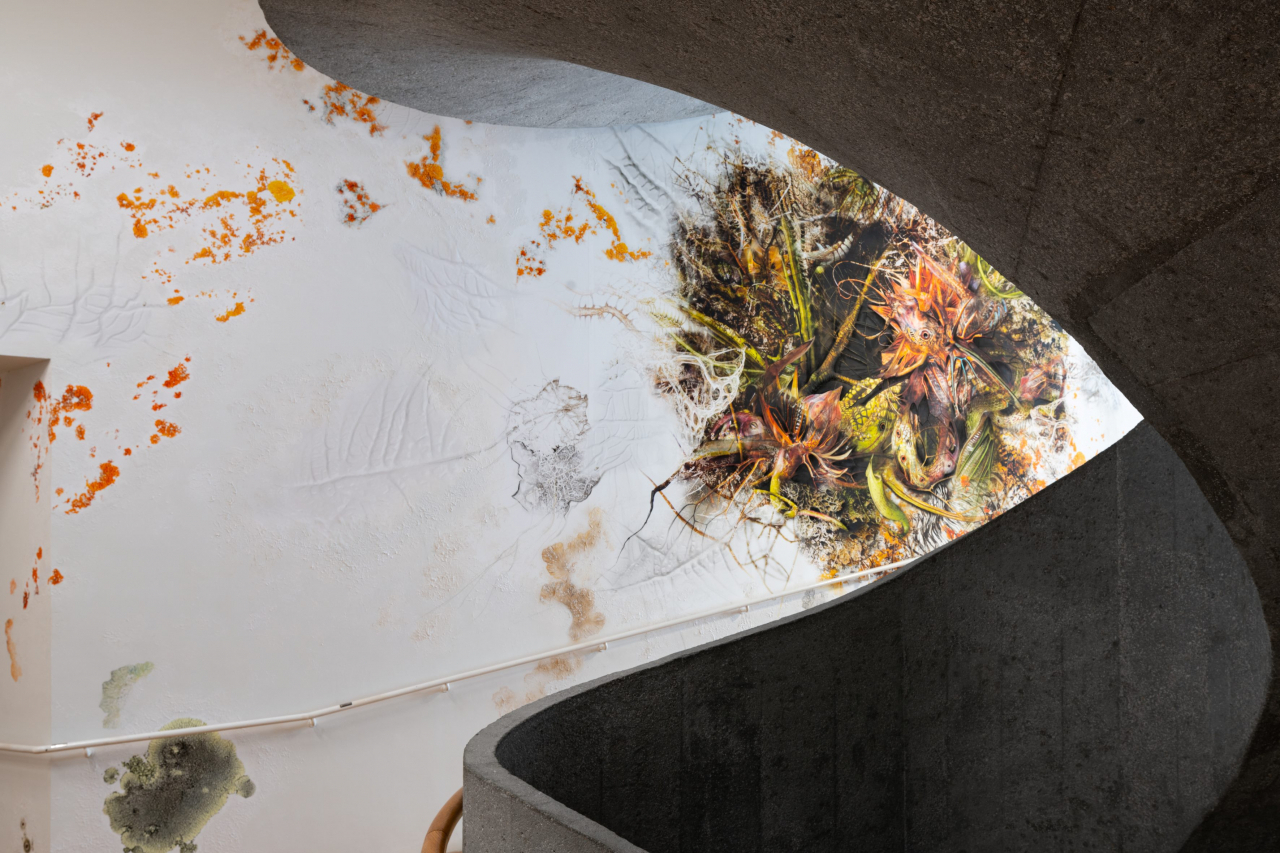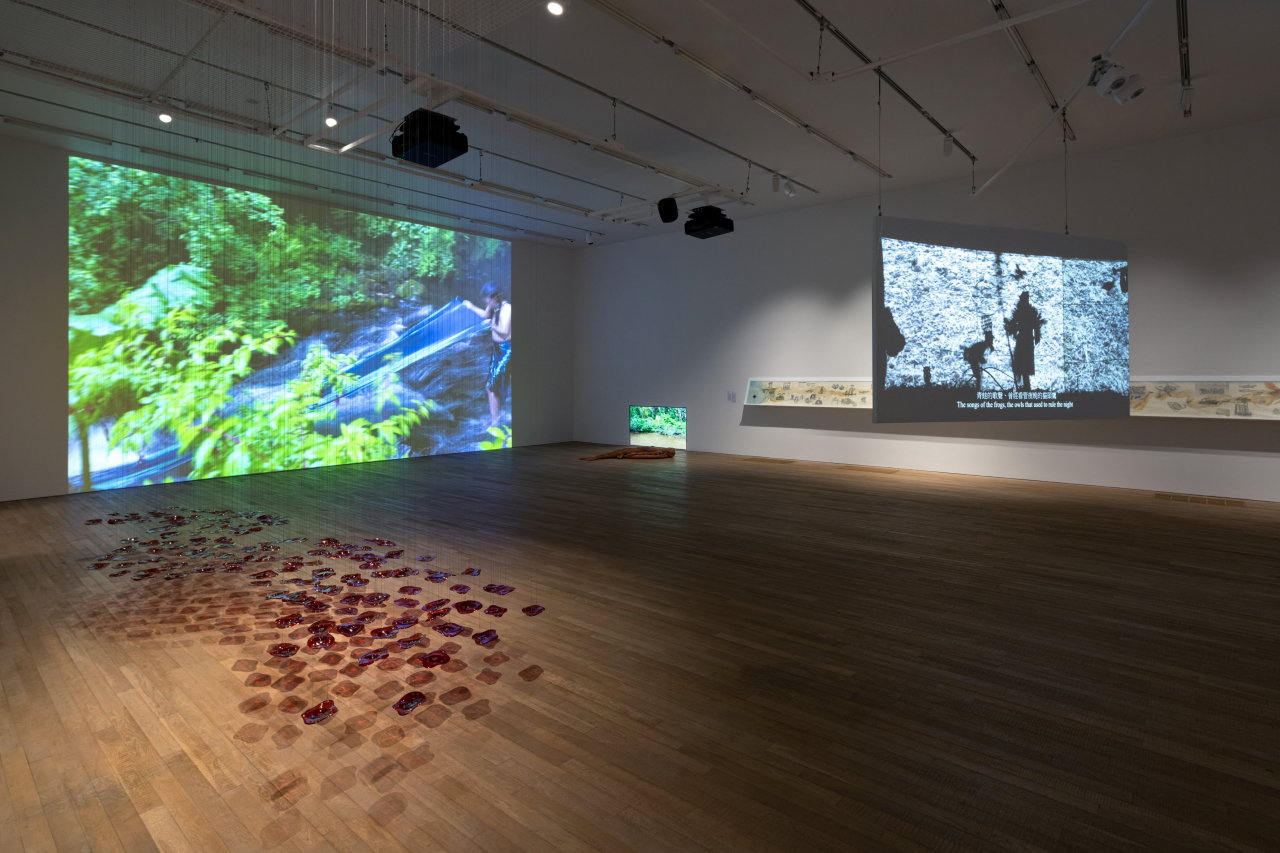 |
"Genetic Drift: Symbiont III – Serpentes Parthenocissus (snake creeper)" by Rohini Devasher, commissioned by Tai Kwun Contemporary (Tai Kwun Contemporary) |
Hong Kong -- Tai Kwun Contemporary, the non-profit visual art program of Tai Kwun, stands in an interesting place - a former prion complex that has now become a landmark in Hong Kong.
Tai Kwun is an arts complex that is home to 16 revitalized heritage buildings, including the former Central Police Station, Central Magistracy and Victoria Prison.
Since its establishment in 2018, Tai Kwun Contemporary, located in a building designed by world-renowned Swiss architecture firm Herzog & de Meuron, has offered an extensive range of public programming.
Its latest exhibition -- “Green Snake: women-centered ecologies” -- explores the connections between art and ecology in the context of rising temperature and extreme weather.
The exhibition, which kicked off on Dec. 20 and runs until April 1, is a group exhibition joined by more than 30 artists and collectives from 20 countries.
“The title of the exhibition itself refers to a very famous Chinese folk tale from the 8th century, ‘Madame White Snake,’” said senior curator of Tai Kwun Xue Tan, giving a press tour on Jan.23.
In the folktale – which has been widely reinterpreted in contemporary literature and cinema -- the sister figure of Green Snake represents women’s agency, sisterhood and gender fluidity.
 |
An installation view of "Green Snake: women-centered ecologies" (Tai Kwun Contemporary) |
“The exhibition Green Snake brings mythological figures to life and reactivates women-oriented narratives through artists’ visions -- which point to other possible futures based on other value systems than those which have drawn the whole planet into a spiral of toxicity and extreme weather events,” said Kathryn Weir, the co-curator of Green Snake.
Some artists in Green Snake explore histories of such devastation and extraction, while other artists look particularly at the knowledge systems that have been marginalized or suppressed.
Visitors to the exhibition are greeted by architect and artist Yussef Agbo-Ola’s “MIKA: 8 Root Temple” in the Prison Yard of Tai Kwun, dedicated to the healing power of soil and plants. The temple architecture is covered with a patterned fabric “skin” made of high-tensile plant fibers, knitted to imitate interlocking. Each thread is entangled with the next like mycelium network.
 |
"MIKA: 8 Root Temple” by Yussef Agbo-Ola (Park Yuna/The Korea Herald) |
A series of artists in Green Snake offer alternative visions of the human body in relation to broader energetic and cosmic relationships; among the artists is Ann Leda Shapiro. Her watercolors and cut-outs, for instance, are meticulously built up of ink and graphite circles that echo the pin pricking of acupuncture practices as well as celestial constellations.
Some of her works feature organs entwined with celestial bodies and nervous systems morphing into rivers, forming a landscape where the human body, the earthly body, and the cosmic body are entwined.
“With our commitment to thought-provoking exhibitions, Tai Kwun Contemporary is delighted to present Green Snake: women-centered ecologies,” said Dr Pi Li, Head of Art at Tai Kwun. “Tai Kwun Contemporary has always been engaged with forward-thinking curatorial and artistic visions, in the form of exhibition-making that seeks out new narratives, coming after Myth Makers, which explored LGBTQ+ perspectives in Asia.”







![[Today’s K-pop] Blackpink’s Jennie, Lisa invited to Coachella as solo acts](http://res.heraldm.com/phpwas/restmb_idxmake.php?idx=644&simg=/content/image/2024/11/21/20241121050099_0.jpg)